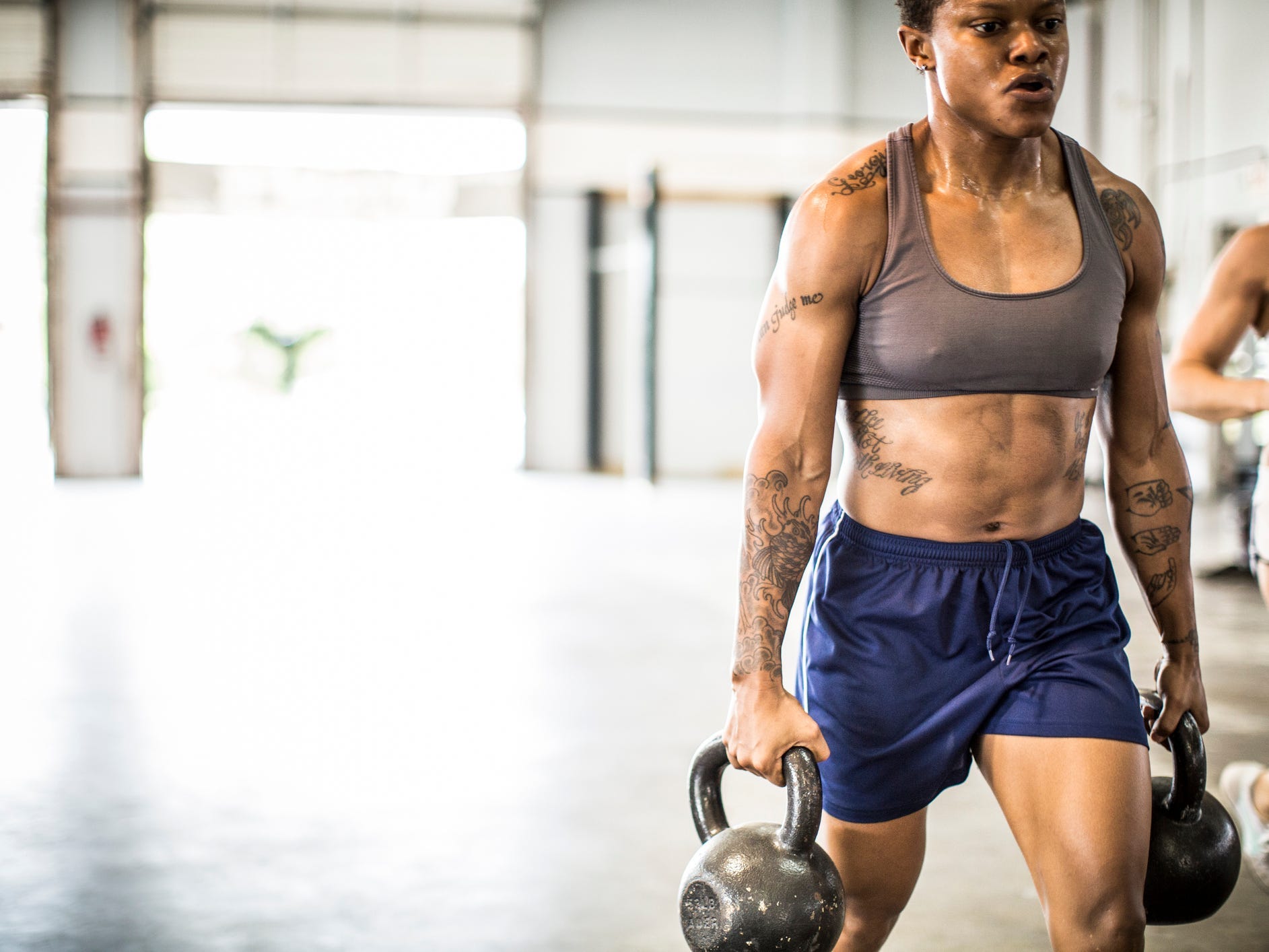
- Kettlebells are great for dynamic, full-body workouts to build strength and endurance, experts say.
- As the most technical type of weight, kettlebells can have a steep learning curve for beginners.
- Trainers recommend starting with foundational movements like the hinge, squat, push, pull, and lunge.
Kettlebells are a unique type of weight perfect for powerful, dynamic movements but can sometimes prove challenging for beginners.
"There's generally more technique and position awareness that's needed because of where the handle is, since it's not as natural or neutral," Ben Foster, head coach and founder of the People's Athletic Club, told Insider.
Starting with the basics can help you nail good kettlebell form and avoid common mistakes.
Done correctly, kettlebell exercises are great for providing a full workout and allowing you to combine moves to build strength, endurance, and even some cardio with weight.
"If someone only has access to a kettlebell, they can very easily get a full body workout," Foster said.
A good coach or class can help total newbies learn kettlebell exercises
If you're completely new to weight training, kettlebells aren't out of the question, but can be tricky to pick up (literally).
"People won't even know how to hold it," Miriam Fried, NYC-based personal trainer and founder of MF Strong, told Insider.
She recommends learning kettlebell exercises from a qualified coach or structured class for best results.
As you get comfortable with them, kettlebells can be a great way to challenge yourself and work out intensely with limited equipment by connecting exercises together, Fried said.
Learn the basics of full-body kettlebell workouts with five beginner exercises
Approachable exercises for kettlebell newbies incorporate foundational movements of the human body, using techniques similiar to those used for dumbbells or a barbell, according to Foster. Get comfortable with the following exercises in order, then try incorporating them into a full-body workout to target different muscle groups.
- Hinge — Two handed kettlebell deadlift: Start with the kettlebell centered between your feet, handle pointing up. Bend your knees and push your butt back and slightly down to hinge forward at the hips until you can reach the kettlebell. Grab it with both hands around the top of the handle. To lift, squeeze your glutes and push into the ground to raise the weight. Keep your core tight and back flat throughout the movement.
- Squat — Goblet Squat: Grab the sides or "horns" of the kettlebell handle and flip the weight upside down, holding it between your hands like a cup. Hold at chest level and lower into a squat, then back up. Foster said kettlebell squats are ideal for keeping your torso up and working your legs instead of your hips and back.
- Pull — Single arm kettlebell row: Stand with your left foot forward and right foot back as though preparing to lunge. Grab the kettlebell with your right hand and lean forward, bringing your back close to parallel to the ground. Pull the weight up with control, keeping your elbow close to your ribs, and slowly lower.
- Push — Single arm overhead kettlebell press: The key to pressing a kettlebell is to hold it with the corner of the handle between your finger and thumb, with the bell resting on your wrist. Press it straight up from the shoulder.
- Lunge — Contralateral reverse lunge: Holding the kettlebell in your right hand, step back with your right leg into a lunge. At the bottom position, the weight should hang in a balanced position to the inside of your left leg. Switch sides and repeat.
Once you're comfortable with the basics, you can move on using the more dynamic, explosive movements unique to kettlebells, such as swings, cleans, and snatches. You can also level up your routine by linking movements together, such as moving from a squat to a lunge, or a swing to a snatch.
